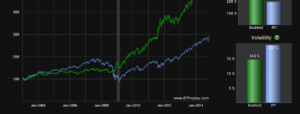I suspect that Federal Reserve officials would prefer to not speak about inflation, nor ever again be asked about it. When oil prices first crashed at the end of 2014, they said it was a “transitory” phenomenon not worthy of much attention. Or if it was to be given some consideration, it was a benefit to consumers, another positive “tailwind” in an otherwise economy seemingly at the time full of them. Their view of the strengthening economy as indicated by the unemployment rate meant that whatever drag from WTI would promptly be corrected by the end of slack in the labor force.
Ironically, it has been oil prices coming off the bottom that has accomplished what no QE could. Still, however, mainstream commentary about inflation fails to recognize that fact, as well as what “rate hikes” actually mean. For most of the media and a great many economists, the view as it existed in 2014 remains somehow operative. When the CPI first rose above 2% for the month of December, those were the terms by which that milestone was described – as if it was actually a meaningful economic achievement.
From CNBC in January:
U.S. consumer prices rose in December as households paid more for gasoline and rental accommodation, leading to the largest year-on-year increase in 2-1/2 years and signaling that inflation pressures could be building…
Price pressures are likely to remain on an upward trend amid expectations of fiscal stimulus from the incoming Trump administration. Republican businessman-turned-politician Donald Trump, who will be sworn in as U.S. president on Friday, has pledged to increase infrastructure spending and cut taxes.
There was really no reason to believe that was ever the case with regard to inflation except through the circular reasoning of the herd mentality that so infects economic commentary.

The euphoria peaked with February inflation statistics, the month of comparison to the absolute trough in oil prices. The CPI registered 2.74% while the PCE Deflator finally for the first time in almost five years reached the Fed’s inflation target. But these are only to be very short stays, for this burst of inflation is the only thing that will prove to be “transitory” and therefore another embarrassment for the $4.5 trillion Federal Reserve. It is oil prices not LSAP’s that gave the media this island of reprieve and it is oil prices that are already taking it away.













Leave A Comment